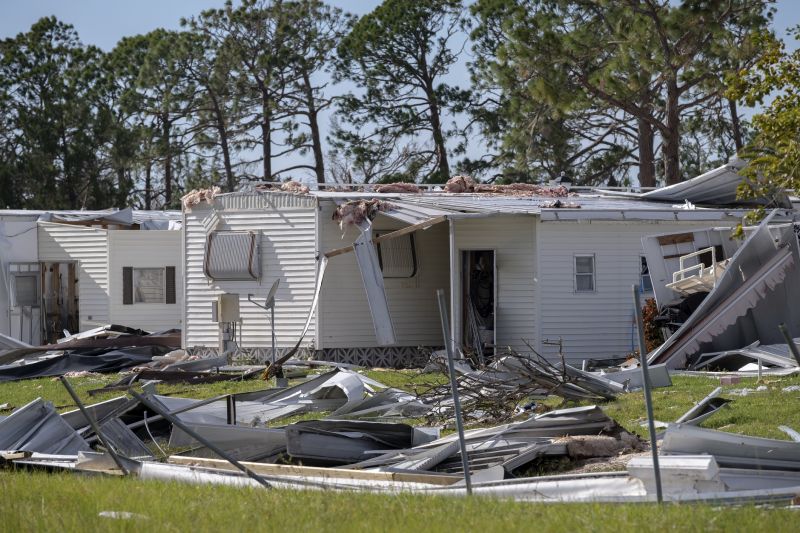Essential Products For Storm Restorations to Ensure Long-Lasting Repairs
Choose from proven products that help you achieve durable, professional-grade restoration outcomes.
 Storm restoration in Cocoa, FL requires a comprehensive approach to repair and reinforce properties affected by severe weather events. Essential products in this process include durable roofing materials, reinforced siding, and effective water management systems. These tools and materials are designed to withstand high winds, heavy rain, and debris impact, helping to protect structures and minimize damage during storm events. Proper selection and installation of storm restoration products can significantly influence the resilience and longevity of a property.
Storm restoration in Cocoa, FL requires a comprehensive approach to repair and reinforce properties affected by severe weather events. Essential products in this process include durable roofing materials, reinforced siding, and effective water management systems. These tools and materials are designed to withstand high winds, heavy rain, and debris impact, helping to protect structures and minimize damage during storm events. Proper selection and installation of storm restoration products can significantly influence the resilience and longevity of a property.
Top Overall Option
Heavy-Duty Roofing System
A heavy-duty roofing system designed for storm-prone areas offers robust protection against high winds, hail, and rain. These roofing solutions typically feature reinforced materials, multiple layers of waterproofing, and wind-resistant designs. Proper installation and maintenance can help prolong the lifespan of the roof and provide reliable shelter during severe weather events.
Types of Products For Storm Restorations
Impact-Resistant Windows
Designed to withstand flying debris and high winds, impact-resistant windows help protect the interior of a building during storms.
Reinforced Siding Panels
Heavy-duty siding panels provide extra protection against wind and rain, helping prevent structural damage.
Waterproof Sealants and Coatings
Sealants and coatings are essential for sealing gaps and preventing water intrusion after storm damage.
Heavy-Duty Tarps
Tarps are vital for covering damaged areas quickly to prevent further water infiltration and structural deterioration.
Roof Underlayment Materials
Additional layers of waterproof underlayment can enhance roof durability and resistance to leaks.
Wind-Resistant Doors
Reinforced doors help prevent wind-driven debris from entering and causing internal damage.
Emergency Generators
Portable generators provide backup power during outages caused by storms, ensuring safety and functionality.
Storm-Ready Flashlights and Batteries
Reliable lighting and power sources are critical during power outages and emergency situations.
Flood Barriers and Sandbags
Flood barriers and sandbags help divert water away from structures during heavy rain and flooding.
Storm-Resistant Gutters and Downspouts
Enhanced gutter systems facilitate water runoff and prevent water damage to foundations.
Structural Reinforcement Hardware
Brackets, straps, and anchors reinforce building structures to withstand high winds.
Portable Debris Removal Equipment
Tools like leaf blowers, debris chutes, and manual removal tools assist in clearing storm debris efficiently.
Weather Monitoring Devices
Storm trackers and weather sensors help monitor conditions and prepare for approaching severe weather.
Waterproof Storage Containers
Secure, waterproof containers protect essential supplies and documents from water damage.
Dehumidifiers and Air Purifiers
These appliances help reduce moisture and prevent mold growth after storm-related water intrusion.
Popular Choices
Widely used for their ability to withstand debris impact and high winds, impacting safety and security.
A common choice for roof repairs and replacements in storm-prone areas, providing enhanced durability.
Frequently used during heavy rains to protect properties from flooding and water intrusion.
Popular for their ability to resist wind pressure and flying debris, improving overall building resilience.
Commonly applied to seal cracks and gaps after storm damage to prevent leaks.
Trusted for backup power during outages, ensuring essential appliances and devices remain operational.
Often used for quick coverage of damaged areas to prevent further water damage.
Popular for managing water runoff and reducing roof and foundation water damage.
Commonly installed to strengthen existing structures against high winds.
Items like helmets, harnesses, and gloves are frequently used during storm repairs for safety.
Popular for storing essential supplies during storm preparations and recovery.
Often used post-storm to reduce moisture and prevent mold growth.
In addition to structural components, safety equipment plays a vital role in storm restoration efforts. Items such as heavy-duty ladders, safety harnesses, and protective gear enable workers to perform repairs safely and efficiently. Emergency supplies like tarps, sealants, and waterproofing membranes are also crucial for immediate response and ongoing protection. When planning for storm restoration, it is important to consider both the immediate needs and long-term durability of the materials used.
Proper assessment and planning are key to effective storm restoration. This involves evaluating existing damage, identifying vulnerabilities, and selecting appropriate products to address specific issues. Local weather patterns and the typical severity of storms in Cocoa, FL should guide the choice of materials and tools. Investing in quality products that meet industry standards can help ensure repairs are resilient and compliant with safety regulations. Whether restoring a residential property or a commercial building, having the right products on hand can streamline the restoration process and improve outcomes.
Key Buying Considerations
- Assess the specific storm risks in Cocoa, FL, including wind speeds, rainfall, and flooding potential.
- Choose materials that meet or exceed local building codes and safety standards.
- Evaluate the durability and resistance ratings of impact-resistant products.
- Consider ease of installation and whether professional help is needed.
- Determine the compatibility of products with existing structures and materials.
- Prioritize products with proven performance in high-wind scenarios.
- Review product warranties and support options for long-term peace of mind.
- Ensure products are suitable for the size and type of your property.
- Factor in maintenance requirements and lifespan of the materials.
- Look for multi-purpose products that can serve in both repair and preventative roles.
- Consider the availability of replacement parts and accessories.
- Evaluate the weight and portability of emergency and safety equipment.
- Check for certifications and industry endorsements for quality assurance.
- Plan for quick deployment of coverings and barriers during an emergency.
- Account for budget constraints while balancing quality and durability.
